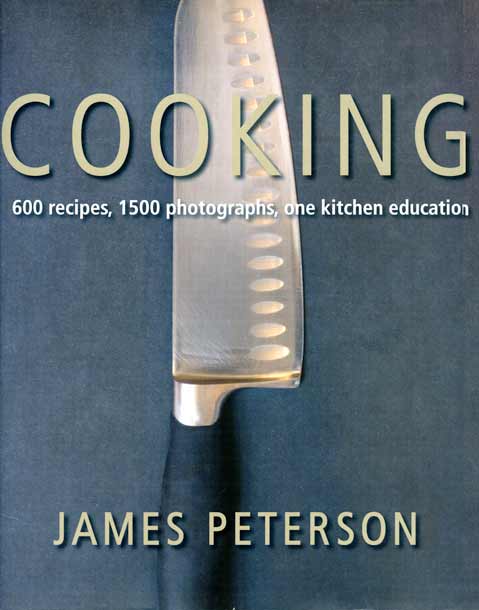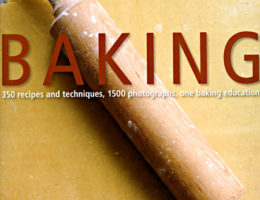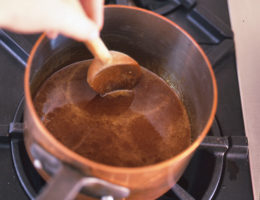Essentially pancakes without leavening, crêpes are thin and delicate and, despite their reputation, are a snap to make. I make a stiff batter with eggs and milk (mostly eggs) that I work with a whisk until smooth. I then gently whisk in milk until the batter has the consistency of slightly thick heavy cream. (It is important when making batters to add only enough liquid to form a smooth paste and then, once the paste is formed, add the rest of the liquid. This prevents lumps from forming and keeps you from having to strain the thing.) Much is made about allowing crêpe batter to rest but, I, always in a rush, rarely bother.
It’s ideal to have flat non-stick crêpe pans (four is the right number for when you get good) but regular non-stick or well-seasoned frying pans will also work. Start by making crêpes one at a time in a pan brushed with melted butter. When the butter froths and then stops frothing, ladle in the batter. Work on establishing just the right amount to cover the pan so you don’t have to pour off the excess if you accidently add too much. You may see, for example, that one crêpe takes a ladle ¾ full. When the pan is hot, ladle the batter in quickly and all at once. Pick up the pan and move it in all directions to get the batter to cover its surface. If there is excess batter, pour it off into the bowl of batter. Cook over medium to high heat until you can the edges of the crêpe begin to brown. Pick the crêpe up with your fingertips and flip it over. (Flipping it by just jerking the pan isn’t easy.) Cook for about a minute on the second side. Stack the crêpes on top of each other. If you’re not using them right away, put a sheet of waxed paper between each one. You can refrigerate them, covered with plastic wrap, for about a week or freeze them for months.


